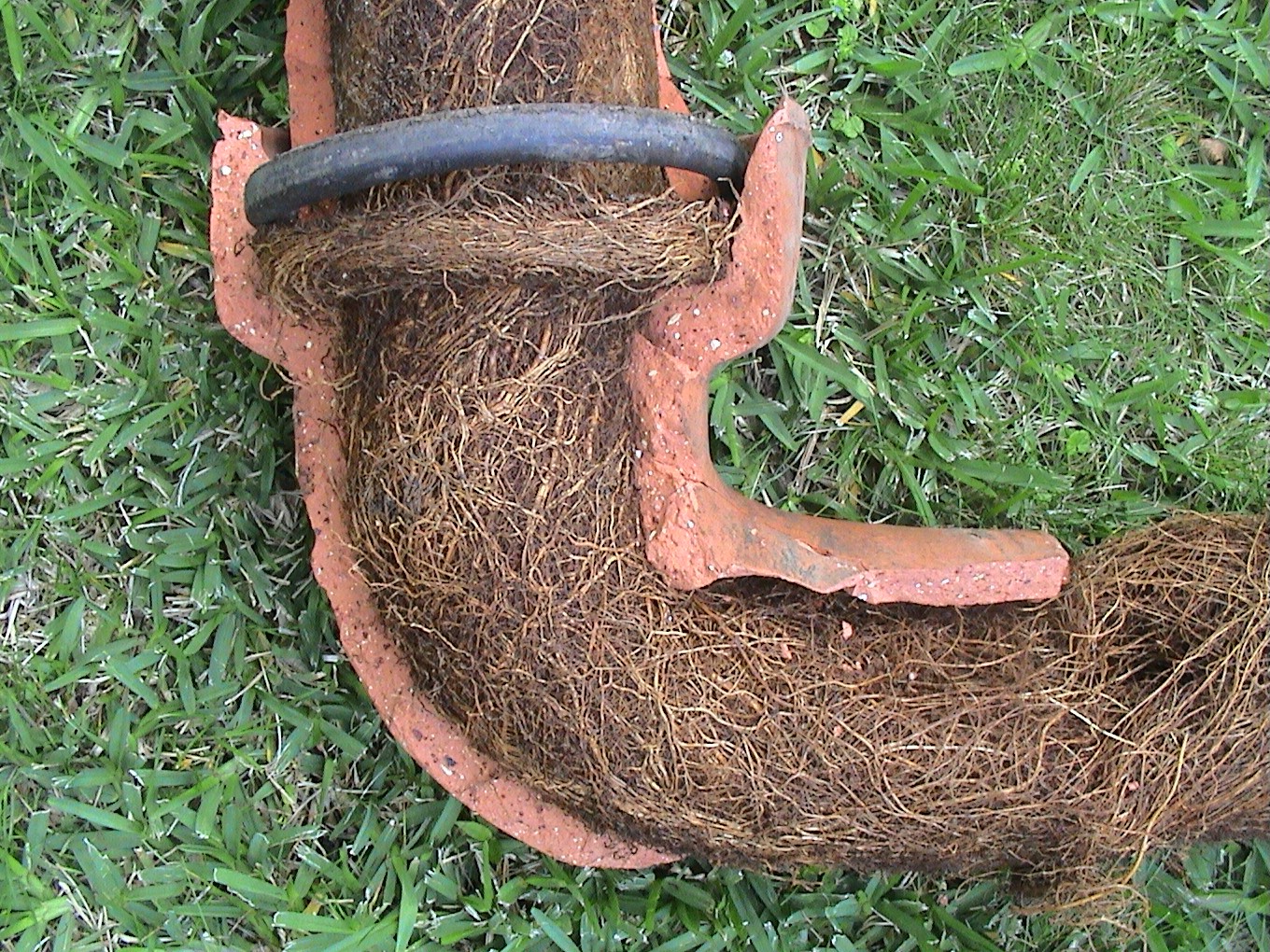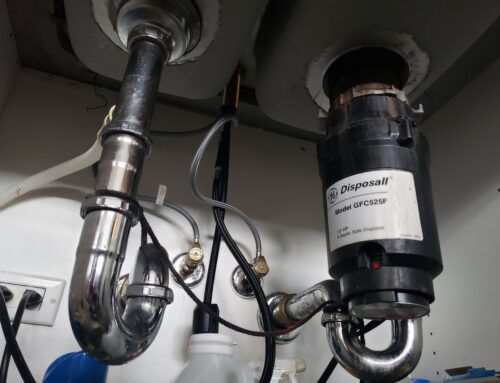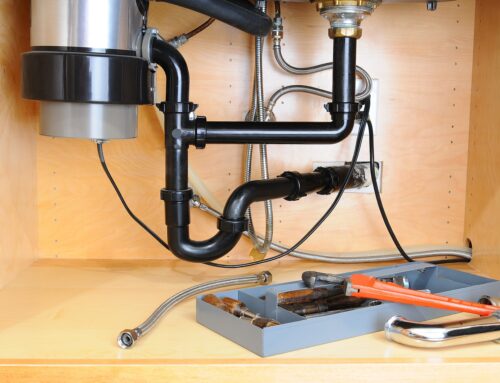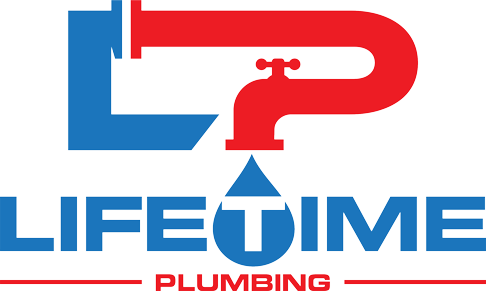Table of Contents
Ways to Get Rid of Roots in Your Sewer Line
Wondering if tree roots have invaded your sewer line? Identifying the signs and symptoms of this common issue is crucial. But what’s even more vital is understanding how to eliminate them and prevent their recurrence.

Understanding the Root of the Problem
Understanding how to remove roots from your sewer line starts with knowing the basics. Knowing why roots get into your sewer line and recognizing the signs they’re there helps you act fast. This proactive approach can shield you from the burden of extensive and costly repairs.
How Do Roots Infiltrate Sewer Lines?
Tree roots gravitate towards moisture, oxygen, and nutrients, which are abundantly present around sewer lines. Older pipes, particularly those made from materials like clay, concrete, or cast iron, may develop small fissures or exhibit loose joints. These imperfections allow for the escape of water and vapor, rendering the pipes an attractive target for rooting. Once roots breach these defenses, they encounter a nutrient-rich environment inside, supporting their growth and propagation. Eventually, the roots can proliferate to the extent that they obstruct the passage of water and waste entirely.
Signs and Symptoms of Root Intrusion
- Slow or clogged drains: A noticeable delay in the draining of sinks, tubs, or showers could signal a root blockage within your sewer line.
- Gurgling noises: Unusual sounds from toilets or drains might be indicative of air pockets trapped in the pipes, a common consequence of root obstruction.
- Foul odors: The presence of sewage or a sulfurous stench around your premises likely points to a root-compromised sewer line.
- Wet or lush spots: Observing unusually moist, soggy, or verdant areas in your yard could hint at a sewer line leak, potentially fostering a sinkhole.
The Impact of Roots on Your Sewer Pipeline
The intrusion of roots into your sewer line is more than a mere inconvenience; it signifies a grave threat to your pipeline and, by extension, your home. Here are some of the dire consequences:
- Pipe damage: The relentless pressure and friction from growing roots can lead to cracked, shattered, or collapsed pipes, necessitating hefty repair or replacement costs. Moreover, such damage can disrupt the flow of wastewater, leading to potential structural issues.
- Sewage backup: By hindering the normal flow of wastewater, roots can cause sewage to back up into your home or yard, posing significant health and environmental risks. Immediate action is necessary to mitigate the spread of contaminants and prevent further damage.
- Reduced capacity: Root intrusion can undermine your sewer system’s hydraulic capacity, limiting the volume of water and waste it can efficiently manage. This reduction in capacity can lead to backups, slow drainage, and potential flooding, necessitating prompt remediation.
- Increased risk: Roots can pave the way for other harmful substances, such as dirt, grease, or chemicals, to infiltrate your sewer line, exacerbating damage and contamination. Addressing root intrusion promptly is essential to prevent secondary issues and maintain the integrity of your sewer system.
Effective Methods for Removing Roots
Discovering tree roots in your sewer line demands immediate action to prevent further damage and complications. Depending on the problem’s severity and your personal preferences, there are various strategies to eradicate these roots effectively. Additionally, below, we outline the most common and successful techniques to rid your sewer line of intrusive roots.
Mechanical Removal Techniques
A direct approach to root removal involves mechanical tools designed to cut or break them away. Whether you tackle this yourself or enlist a professional plumber depends on your skill level and the tools at your disposal. Key mechanical tools include:
- Cutters: Blades or corkscrews attached to a flexible cable, capable of slicing through roots and clearing blockages. These devices provide precise cutting action, effectively removing roots from the pipe.
- Nozzles: Devices that eject water or air at high pressure, dislodging roots and flushing them out. Moreover, nozzles are particularly useful for clearing out smaller roots and debris, restoring proper flow within the pipe.
- Cable machines: Machines that spin a cable with a cutting head within the pipe, scraping off and removing roots. Cable machines offer versatility in navigating bends and obstacles, making them suitable for various pipe configurations.
- Jetters: Utilize water jets to expel the roots from the pipe, additionally cleaning the pipe to prevent future root growth. Jetters are highly effective in removing stubborn roots and clearing away any remaining debris, restoring optimal flow and function to the sewer line.
Chemical Solutions to Dissolve Roots
An alternative method involves using chemical solutions designed to dissolve or neutralize roots. Whether it’s a DIY project or a professional job depends on the chemicals’ nature and quantity. Popular chemical solutions include:
- Rock salt: A natural, cost-effective solution that dehydrates and ultimately kills the roots. It can be poured into the toilet and flushed down the pipe.
- Copper sulfate: A blue crystalline substance that poisons and eliminates roots, dissolvable in water and flushable through your toilet or drain.
- Tree root killer: A commercially available product with chemicals specifically engineered to destroy roots. Follow the package instructions for application.
Professional Intervention: When to Call the Experts
There are instances when roots in your sewer line are too persistent or widespread to handle alone. In such situations, professional plumbers bring their expertise to offer permanent solutions. Moreover, reasons to seek professional help include:
- Pipe damage: Should roots crack, break, or collapse your pipe, repair or replacement might be necessary. Our professional plumbers at Lifetime Plumbing can achieve this with minimal disturbance to your yard by employing trenchless techniques like pipe lining or pipe bursting.
- Sewage backup: Roots causing sewage backup into your home or garden require thorough cleaning and sanitization. Our expert plumbers in Chicago will handle this safely and efficiently using the appropriate equipment and disinfectants.
- Reduced capacity: If roots have diminished your sewer system’s efficiency, enhancing the flow rate or upgrading to a larger pipe may be necessary. At Lifetime Plumbing, we can address this with techniques such as hydro jetting or pipe relining. Moreover, you can read more about the Benefits Of High-Pressure Drain Cleaning.
- Increased risk: When roots create entry points for other substances into your sewer line, sealing and protecting the pipe becomes crucial. Our plumbers can ensure this using durable materials like epoxy resin or cured-in-place pipe.
Preventative Measures: Avoid Future Root Problems
Regular Inspection and Maintenance
One of the most effective ways to prevent root problems is through professional inspection and maintenance of your sewer line. Ideally, schedule these checks once every one to two years. Such regular inspections can help in spotting potential issues early, thereby enabling timely repairs or preventative actions. Additionally, routine maintenance ensures your sewer line remains free from debris or build-up, factors that could attract or nourish roots. Popular techniques for inspecting and maintaining sewer lines include camera inspection, hydro jetting, cable machines, and chemical solutions. By committing to regular sewer line services, you’re not only preventing future headaches but also avoiding costly repairs or replacements down the line.
Landscaping Decisions to Protect Your Sewer Line
Making smart landscaping decisions is another critical strategy for preventing root issues. This involves understanding the location of your sewer line and ensuring there’s ample distance between it and any trees or plants with deep or aggressive roots. You can identify your sewer line’s location by looking for the sewer cleanout pipe near your house or curb markings by the street. If unsure, don’t hesitate to contact local authorities or a professional plumber for assistance. Once you know the whereabouts of your sewer line, avoid planting anything within 10 feet of it, aside from grass and flowers. Trees, especially those with strong, deep roots, should be kept at a distance of 20 to 30 feet. Opt for pipeline-friendly trees like Japanese maple, crabapple, or Eastern redbud, known for their shallow or slow-growing roots. Additionally, consider installing a root barrier as an extra precaution to keep roots at bay. Making wise landscaping choices can significantly lower the risk of root intrusion and help maintain the integrity of your sewer line.
Conclusion
In conclusion, when addressing issues with tree roots in sewer lines, it’s crucial to opt for effective solutions promptly to prevent further damage and restore proper functioning. Various methods, ranging from chemical treatments to homemade remedies, offer viable options for homeowners facing this common problem.
FAQ
What dissolves tree roots in sewer lines fast?
For a rapid solution to dissolve tree roots in sewer lines, copper sulfate is highly effective, as it eradicates roots upon contact. Alternatively, rock salt can dehydrate and progressively shrink the roots. Moreover, both options provide quick results, ensuring efficient resolution of the issue.
How do I get rid of roots in my sewer pipe?
To eliminate roots from your sewer pipe, utilize copper sulfate crystals available at your local hardware store or garden supply center. Dispensing one-half cup of these crystals into your toilet and flushing allows them to navigate through the pipes and exterminate the roots blocking the flow. Additionally, regular application of this method can help prevent future root intrusion, maintaining optimal pipe functionality.
What is a homemade root killer for sewer lines?
An effective homemade root killer for sewer lines consists of a blend of salt, baking soda, vinegar, and boiling water. This concoction creates a foam that attacks roots on contact, although it may take some time for the deceased roots to be flushed away. Furthermore, this environmentally friendly solution offers a cost-effective alternative for homeowners seeking to address root intrusion without resorting to harsh chemicals.
What kills tree roots quickly?
To swiftly deal with tree roots, applying a chemical herbicide, such as glyphosate or triclopyr, directly to the stump’s exposed cambium layer or roots proves effective. Another method involves drilling holes in the stump or roots and filling them with rock salt, which effectively dehydrates and eliminates them. These methods ensure rapid eradication of tree roots, facilitating efficient resolution of sewer line issues and preventing further damage to the plumbing system.







